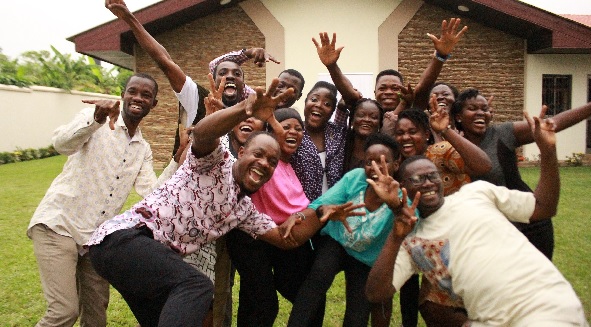
Promoting youth development: Worthy endeavour
SOME weeks ago, the Planned Parenthood Association of Ghana (PPAG) visited the management of the Graphic Communications Group Limited (GCGL) and the two parties committed themselves to a youth development agenda.
Advertisement
While the PPAG spoke about the refocusing of its initiatives towards the youth and their sexual reproductive rights to enable them to realise their full potential as adults; the GCGL, the leading media voice in the country, pledged to ensure effective communication for the realisation of those goals, as it had already been doing.
The Ghana National Youth Policy (2022 —2032) defines a youth as a person between the ages of 15 and 35.
The definition by Ghana is in keeping with the National Youth Authority Act 2016 (Act 939) and the policy to ensure the participation of the youth in the development of the country, as well as their own development for them to become responsible adults.
Youth development in the policy is, “…the process of providing opportunities that support young people to acquire knowledge, skills, competencies, and the right attitudes needed to realise their potential for optimum productivity through adolescence to adulthood.
It is about young people becoming active members of society, contributing to national development, fostering positive relationships, and building their leadership strengths.”
Indeed, the youth and their reproductive health are important foundations in any society. That is because they are the demographic group that continues with efforts geared towards nation building and development.
A vulnerable youth group in any country spells out a weak future. Therefore, a strong and productive youthful population, with access to leisure, economic fortunes, employment opportunities and innovation is a guarantee for a bright future for
countries.
There is no denying the fact that the country, however, finds its youthful population struggling. The Ghana Statistical Service (GSS), in May last year, released its Annual Households Income and Expenditure Survey (AHIES) Quarter 3 2022 Labour Statistics Report which said about 2.5 million youth were not in Education, Employment or Training.
The phenomenon of youth not in Education, Employment or Training (NEET) has dire consequences for the youthful population, which is 38 per cent out of the 30.8 million people, according to the 2021 Population and Housing Census (PHC), and that simply means that the youth are not growing or developing.
To get better clarity of the conundrum, youth unemployment rate for 2022 was 7.14 per cent, a 0.02 per cent decline from 2021 which was 7.16 per cent.
With all these challenges bedevilling the country’s youthful population, collaborations similar to what is being created between the PPAG and the GCGL is welcome.
Such collaboration helps to forge opportunities for the youth to take advantage of any and every opportunity these two institutions have to offer, and the two are formidable partners in the sphere of knowledge acquisition and information dissemination.
The Daily Graphic expects that its collaboration with the PPAG would be a worthy example for other institutions to come together to work for Ghana’s future.
We need to collaborate now to save the youth of Ghana from hopelessness. The Daily Graphic also urges state institutions whose mandate revolves around youth development to continue to work hard in their coordination of all the efforts towards youth development.
Yes, we need a healthy, productive and innovative youth for our collective bright future.




